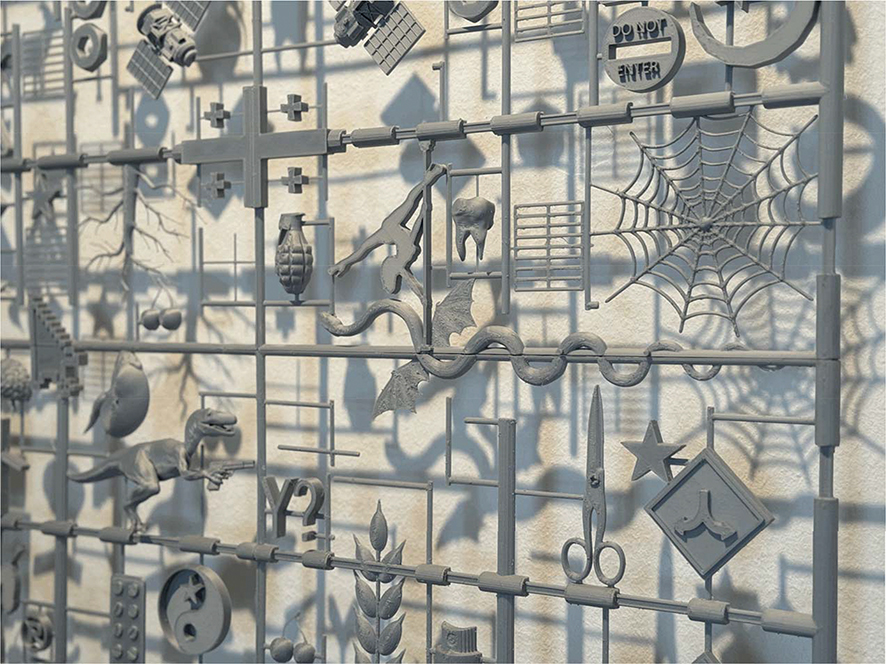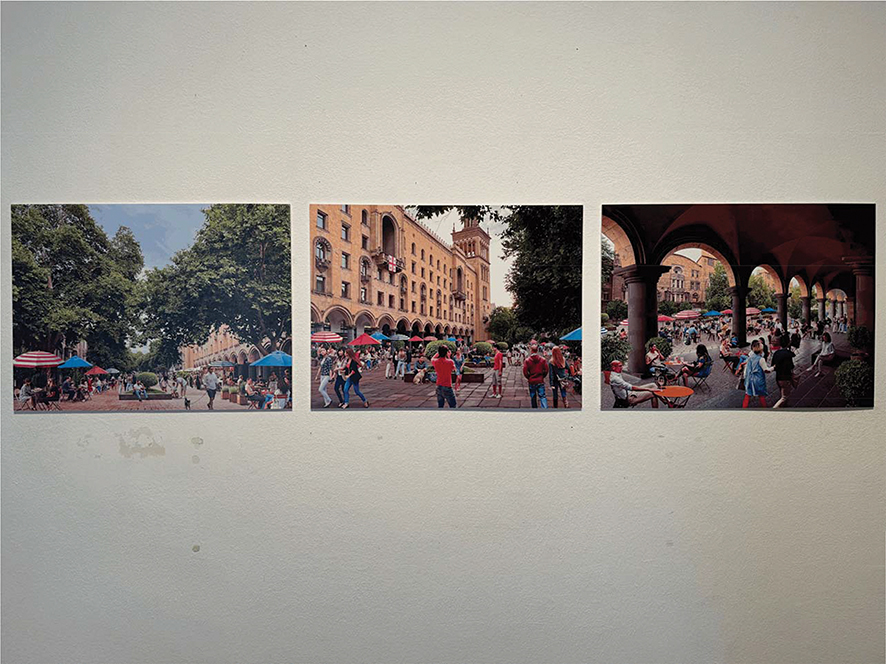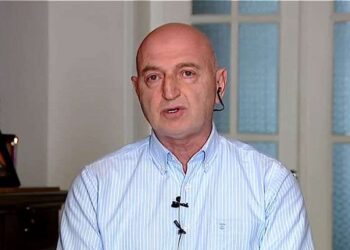As the Goethe-Institut Georgien marks its 30th anniversary, the exhibition ‘Unbound Trajectories of the Future’ offers an audacious exploration of what lies ahead, framed against the backdrop of today’s complex socio-political landscape. This extensive showcase, running for three months, assembles a diverse group of 19 artists whose works challenge conventional perspectives and propose innovative visions of the future. With themes spanning technology, environment, migration, and more, the exhibition invites viewers to confront and reflect on the future’s multifaceted potential. The exhibition runs until October 1st, and admission is free.
Reconstructing Thought through 3D Design
Mishiko Sulakauri’s ‘Phone Call to the Architect’ presents an intriguing metaphor for the interplay between materiality and thought. The 3D-printed object, designed by Giorgi Patarkatsashvili, serves as a modern plastic constructor that reimagines architectural creation. By combining tangible and intangible elements, Sulakauri’s work reflects on how past and present choices inform our future. This piece invites viewers to consider how our current frameworks shape future ideologies, emphasizing that our construction of the future is as much about intellectual and conceptual development as it is about physical structures.

The Art of Destruction and Rebirth
Gvantsa Jishkariani’s tapestry series, ‘Generational Trauma,’ is a poignant commentary on cultural and aesthetic evolution. By transforming Soviet-era jacquard tapestries through a process of deconstruction and embellishment, Jishkariani critiques the remnants of past ideologies while celebrating the resilience of the present. The artist’s method—ripping, burning, and redecorating—serves as a metaphor for the personal and collective struggle against outdated cultural narratives. The resulting works, rich with hand-embroidered detail and decorative elements, embody a narrative of destruction as a form of liberation and renewal.
Envisioning a Utopian Public Space
In ‘Dare to Think Differently,’ Gigi Guledani offers a transformative vision of Tbilisi’s urban landscape. The photomontage reimagines a section of the Rustaveli/Zemeli road area as a vibrant, green pedestrian zone. Integrating the Academy of Sciences and the Mtatsminda Park cable car station into this vision, Guledani presents a utopian scenario where urban planning harmonizes with ecological and social needs. This work challenges viewers to consider how reimagined public spaces can foster community and sustainability in an ever-evolving cityscape.
The Scale of Migration and Dystopia
Sandro Pachuaashvili’s monumental painting, ‘Where is Vardo?’ addresses the vast and often abstract concept of migration. By depicting individuals traversing a desolate, dystopian landscape, Pachuaashvili uses scale to emphasize the insignificance of personal struggles against the backdrop of mass migration. The painting’s expansive format underscores the collective nature of human displacement, urging viewers to reflect on the broader implications of migration and the fragmented connections between people and their environments.

The Digital Future of Communication
The collaborative project ‘Beyond the Walls,’ led by students from the Tbilisi State Art Academy under the supervision of Sandro Asatiani, presents a forward-looking vision of communication. The publication and video installation explore how digital technologies are reshaping dialogue and interaction. This work envisions a future where traditional physical spaces give way to virtual realms, emphasizing the role of digital platforms in facilitating new forms of discourse and connection.
Virtual Narratives of Unity
Mananiko Kobakhidze’s ‘The Tower of Unity’ employs augmented reality to revisit the myth of the Tower of Babel, reflecting on contemporary multiculturalism in Tbilisi. Through 3D modeling and AR, Kobakhidze creates a virtual space that overlays urban memories with a narrative of unity amidst diversity. This work highlights the challenges and possibilities of fostering communication and understanding across cultural and linguistic divides in an increasingly digital world.
A Dystopian Future Reimagined
Salome Vepkhvadze’s short film, ‘From 208402024,’ presents a stark vision of a future ravaged by ecological collapse. The experimental cyberpunk narrative depicts a world where environmental degradation has become the norm, and technological advancements offer a temporary escape from this bleak reality. Vepkhvadze’s film critiques the intersection of ecological collapse and technological escapism, urging viewers to consider the long-term impacts of current environmental policies and technological innovations.

Surveillance and Security in the Digital Age
Ana Kezeli and Sandro Sulaberidze’s installation, ‘The Security Alphabet,’ addresses the pervasive issue of surveillance in the digital era. By creating an environment where viewers are both observed and observing, the installation raises critical questions about privacy, security, and the ethics of information technology. The work’s interactive nature invites viewers to explore the fine line between security and intrusion, highlighting the complex dynamics of personal data in a rapidly evolving technological landscape.
Language and Interpretation
The site-specific text-based piece ‘Glossary: The Future,’ by Mariam Natroshvili and Detu Jintcharadze, challenges viewers to engage with language in a novel way. By presenting definitions without accompanying words, the work prompts audiences to infer meanings and reflect on the evolving nature of language. This interactive approach underscores the fluidity of communication and the need for adaptive interpretive strategies in an ever-changing world.
Networks of Communication
Tinatin Tsurkava and Ilia Makharadze’s installation, ‘Network,’ explores the concept of communication networks through a suspended metal mesh structure. The work symbolizes the future of informational exchanges, emphasizing the increased complexity and adaptability of communication systems. The interplay between the physical and symbolic representations of language highlights the ongoing evolution of dialogue and interaction in a dynamically shifting geopolitical landscape.
Uniting Voices in a Fragmented World
‘Unbound Trajectories of the Future’ offers a rich and diverse exploration of how art can engage with and shape our understanding of the future. Each work in the exhibition presents a unique perspective on contemporary challenges and possibilities, reflecting the Goethe-Institut Georgien’s commitment to fostering intercultural dialogue and innovative thinking. Through this thought-provoking showcase, viewers are invited to consider the trajectories of our shared future and the role of art in envisioning and navigating the path ahead.
By Ivan Nechaev














